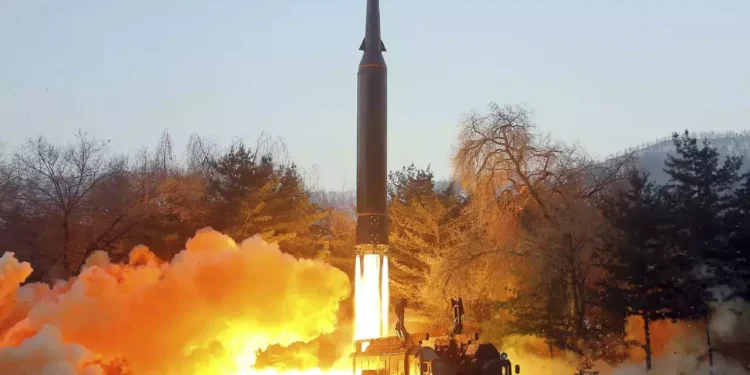North Korea has announced the successful testing of a multiwarhead missile, claiming it can overwhelm US missile defenses. According to state news agency KCNA, the test involved the separation and guidance of individual mobile warheads, which successfully hit three target coordinates. Additionally, a decoy separated from the missile and was verified by radar. The test aims to secure MIRV (multiple independently targetable reentry vehicle) capability, a sophisticated technology that would allow multiple warheads to be fired from a single ballistic missile.
However, South Korea and Japan have expressed skepticism regarding these claims. South Korea’s military, in a joint analysis with the US, suggested that the missile exploded in midair shortly after launch. Japan also reported debris falling into the waters off North Korea’s east coast. South Korean military spokesperson Lee Sung-joon described North Korea’s claims as exaggerated, asserting that the photos released by North Korea were likely fabricated or recycled from previous tests.
Ankit Panda, a senior analyst at the Carnegie Endowment for International Peace, noted that this test had been anticipated, as it was one of the last remaining items on Kim Jong Un’s military modernization wish list from the Eighth Party Congress in January 2021. He suggested that this test appeared to be an initial evaluation of key subsystems necessary for developing a workable MIRV. Panda expects more tests to follow, potentially leading up to a launch of an intercontinental ballistic missile (ICBM) on a lofted trajectory. He emphasized the significance of decoys, which North Korea intends to use to stress and overcome US missile defenses.
The KCNA report came a day after South Korea’s military indicated that North Korea had launched a possible solid-fuelled hypersonic weapon that exploded midair. South Korea’s Joint Chiefs of Staff spokesperson Lee Sung-joon stated that the North’s missile test was not as described by KCNA, labeling it as a means of deception. Panda commented that it appeared Seoul initially misinterpreted the nature of the test.
The launch has been condemned by South Korea, the US, and Japan as a violation of United Nations Security Council resolutions and a serious threat. These countries have warned against additional provocations, especially in the wake of last week’s summit between Kim Jong Un and Russian President Vladimir Putin, during which the two leaders signed a mutual defense pact. This test marks North Korea’s first weapons launch since firing nuclear-capable multiple rocket launchers to simulate a preemptive attack on South Korea almost a month ago.
North Korea has also escalated tensions by floating rubbish-filled balloons across the border to South Korea, describing it as a tit-for-tat response to South Korean activists sending political leaflets via their own balloons. In response, South Korea briefly conducted propaganda loudspeaker broadcasts at border areas for the first time in years.
North Korea’s continued weapons development and testing come as part of Kim Jong Un’s broader strategy to modernize the country’s military capabilities. The development of MIRV technology is particularly concerning for the international community, as it enhances the destructive potential of North Korea’s missile arsenal and complicates missile defense efforts. The situation remains tense, with the international community closely monitoring North Korea’s actions and potential future tests.
Overall, the successful testing of a multiwarhead missile, if true, represents a significant advancement in North Korea’s military capabilities. However, the skepticism from South Korea and Japan highlights the ongoing uncertainties and the potential for misinformation from Pyongyang. The international community remains on high alert, emphasizing the need for diplomatic efforts to address the growing threats posed by North Korea’s missile and nuclear programs.
















